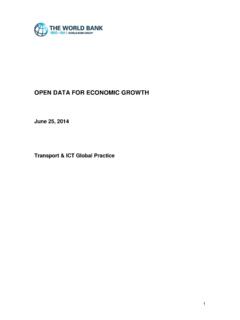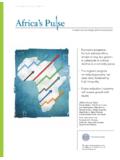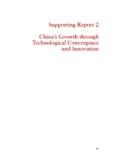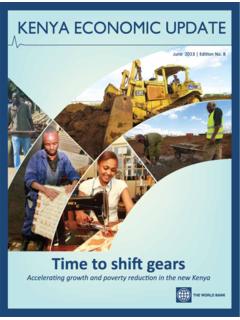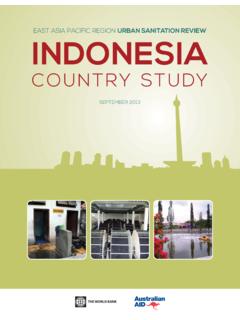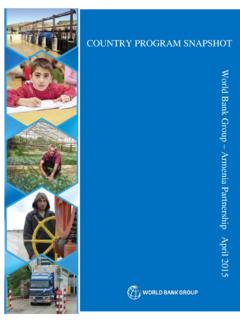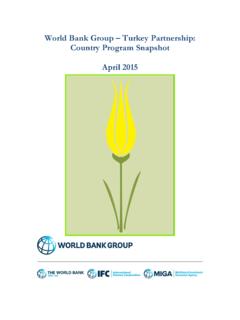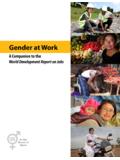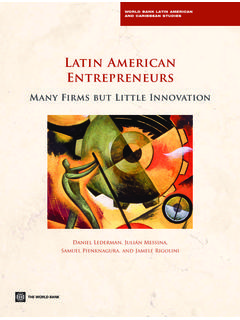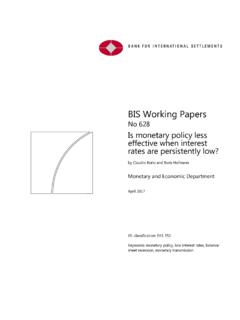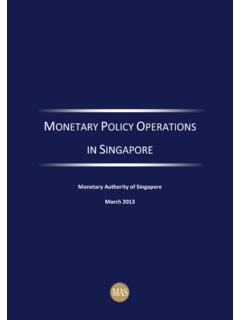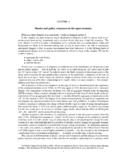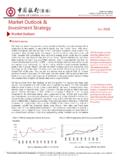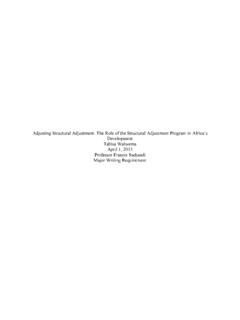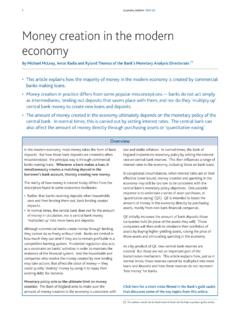Transcription of The Dawn of a New Economic Era? - World Bank …
1 The World bank in the Russian FederationThe dawn of a New Economic Era?33 | April 2015 Public Disclosure AuthorizedPublic Disclosure AuthorizedPublic Disclosure AuthorizedPublic Disclosure AuthorizedThe dawn of a New Economic Era?Russia Economic Report I. Recent Economic Developments II. Economic OutlookIII. In Focus: The Economic Impact of SanctionsThis report is produced twice a year by World bank economists of the Macroeconomics and Fiscal Management Global Practice. The team for this issue, led by Birgit Hansl (Lead Economist and Program Leader for Macroeconomics and Fiscal Management, Governance and Social Policy in Russia, consisted of Sergei Ulatov (Senior Economist), Stepan Titov (Senior Economist), Olga Emelyanova (Research Analyst), Mikhail Matytsin (Consultant), John Pollner (Lead Financial Officer), Mizuho Kida (Economist), Ekaterine Vashkmadze (Senior Economist), Damir Cosic (Economist), John Baffes (Senior Economist), Hanspeter Wyss (Senior Economist), Seyed Reza Yousefi (Consultant) and Irina Rostovtseva (Team Assistant).)
2 Birgit Hansl, Nancy Benjamin (Senior Economist), and Julie Saty Lohi (Consultant) produced the focus note on the Economic impact of sanctions with contributions from Michael Ferrantino (Lead Economist) and Karlygash Dairabayeva (Consultant).Peer reviewers were Vinaya Swaroop (Lead Economist), Souleymane Coulibaly (Lead Economist), Fritzi Koehler-Geib (Senior Economist) and Karlis Smits (Senior Economist). The report was edited by Anne Grant (Сonsultant), and the graphic designer was Robert Waiharo (Сonsultant). The team is grateful for advice received from Laura Tuck (Vice President of the Europe and Central Asia Region), Hans Timmer (Chief Economist of the Europe and Central Asia Region), Michal Rutkowski (Country Director for Russia), Miria Pigato (Practice Manager, Macroeconomics and Fiscal Management Global Practice), Peter Tabak from the European bank for Development and Reconstruction, and the IMF team for Russia, led by mission chief Ernesto Rigo OF CONTENTABBrEviATiONs ANd ACrONyms.
3 IExECuTivE summAry .. iiii. rECENT Economic dEvELOpmENTs .. Growth - A Lost Year .. Labor Market - Adjustment of Wages and Incomes .. Monetary Policy and The Financial Sector - Navigating a Currency Adjustment .. Balance of Payments Deteriorates as Capital Flees .. The Government Budget - The Calm Before the Storm? .. 16ii. OuTLOOk .. Outlook for Russia Protracted Recession .. 22 Baseline Scenario .. 24 Alternative Upper-bound Oil Price Scenario .. 26 Alternative Lower-bound Oil Price Scenario .. Risks to the Growth Outlook .. Risks to the Poverty and Shared Prosperity Outlook .. 30iii. ThE Economic impACT OF sANCTiONs .. Introduction .. The Economic Impact of Sanctions.
4 Lessons From International Experience with Sanctions .. 35 South Africa .. The Economic Impact of Sanctions on Russia .. 36 rEFErENCEs .. 43 ANNEx: main indicators .. 44 LisT OF FigurEsFigure 1: GDP growth, 2003-2014, percent .. 2 Figure 2: Composition of GDP growth, percent .. 2 Figure 3: Global industrial production and trade growth .. 3 Figure 4: Gross capital flows to developing countries, US$ billions .. 3 Figure 5: Quarterly GDP Growth, y-o-y, and q-o-q, sa .. 3 Figure 6: Global energy prices .. 4 Figure 7: Growth in the crude oil supply, and elsewhere .. 4 Figure 8: GDP reactions to external shocks, 2008 and 2014 .. 5 Figure 9: Growth in tradables, y-o-y, percent .. 6 Figure 10: Contribution to GDP by sector, percent of GDP.
5 6 Figure 11: Beveridge curve .. 7 Figure 12: Employment and Economic activity, million workers .. 7 Figure 13: Unemployment dynamics, 2008 and 2014 .. 8 Figure 14: Real wage growth, 2008 and 2014 .. 8 Figure 15: Real wage growth by sector, y-o-y, percentage points .. 9 Figure 16: Contribution to real income growth, entire population, y-o-y, percent .. 9 Figure 17: Oil prices and the ruble exchange rate, 2014 .. 9 Figure 18: CPI inflation by component, y-o-y .. 11 Figure 19: CBR policy rate hikes .. 11 Figure 20: Current account balance, percent of GDP .. 12 Figure 21: Trade and services balances and oil prices .. 12 Figure 22: Top 10 countries sending workers to Russia, 2013 .. 13 Figure 23: Top 10 countries to which Russians migrate, 2013.
6 13 Figure 24: Remittance outflows, 2014 .. 14 Figure 25: Remittance inflows, 2014 .. 14 Figure 26: Russia CDS spreads for 5-year bonds, basis points .. 14 Figure 27: Reserve fund and National Welfare Fund, percent of GDP .. 17 Figure 28: Real GDP growth, y-o-y, percent .. 22 Figure 29: Real GDP, percent, 2012=100 .. 22 Figure 30: Global oil spare capacity and inventories .. 23 Figure 31: Growth in global oil demand .. 23 Figure 32: Poverty rate projections, percent of population .. 31 Figure 33: Share of the population with per capita income in US$ ppp/day .. 32 Figure 34: Stock market prices and trade volumes .. 37 Figure 35: Exchange rate dynamics, Euro-dollar basket (axis in reverse order) .. 37 Figure 36: Bond issuance in US$ billion, US$ denominated.
7 39 Figure 37: Russia corporate emerging market bond index for Russia .. 39 Figure 38: Russia s food and beverage imports: Q3-2013 and 2014 (US$ billion) .. 40 Figure 39: Russia s dairy product imports: Q3-2013 and 2014 (US$ billion) .. 40 Figure 40: Russia s food and beverage imports by country: Q3-2013 and 2014 (US$ billion) .. 41 Figure 41: Russia s cereal imports by country: Q3-2013 and 2014 (US$ billion) .. 41 Figure 42: Russia s coal exports,Q3-2013 and 2014 (US$ billion) .. 41 Figure 43: Russia s fuel exports: Q3-2013 and 2014 (US$ billion) .. 41 LisT OF TABLEsTable 1: Contribution to growth by demand components, percentage points .. 5 Table 2: Balance of payments, 2008-2014, US$ billions .. 15 Table 3: Net capital flows, 2008-2014, US$ billions.
8 15 Table 2: Russia s external debt, 2011-2014, US$ billions .. 15 Table 5: Federal budget 2012-2014, percent of GDP .. 16 Table 6: Consolidated budget, consolidated subnational budget, consolidated federal EBFs, 2011-2014, percent of GDP 17 Table 7: Economic indicators for the baseline scenario .. 24 Table 8: Global GDP growth, percent .. 25 Table 9: Economic indicators for the upper-bound oil price scenario .. 27 Table 10: Economic indicators for the lower-bound oil price scenario .. 28 Table 11: Poverty rates, percent .. 31 LisT OF BOxEsBox 1: Global Economic trends in 2014 .. 3 Box 2: Energy price trends .. 4 Box 3: How does this adjustment compare to the crisis in 2008-2009? .. 5 Box 4: How the labor market adjusted in previous crises.
9 8 Box 5: December 2014: Policy moves to enhance financial stability .. 10 Box 6: Migration and remittance trends .. 13 Box 7: The government anti-crisis plan .. 18 Box 8: Oil price outlook .. 23 Box 9: Global outlook .. 25 Box 10: The 2015-2017 budget projections .. 26 Box 11: Methodologies of Economic sanctions evaluation .. 35 Box 12: Russia s food import ban .. 37 Bop Balance of PaymentsCA Current AccountCBr Central bank of RussiaCds Credit Default SwapCis Commonwealth of Independent StatesCpi Consumer Price IndexEBF Extra-Budgetary FundEu European UnionFdi Foreign Direct Investmentgdp Gross Domestic ProductimF International Monetary FundNpL Non-Performing LoanNWF National Welfare FundOECd Organization for Economic Cooperation and DevelopmentOpEC Organization of the Petroleum Exporting Countriesppp Purchasing Power ParityrdiF Russian Direct Investment FundrEEr Real Effective
10 Exchange RateusiTC United States International Trade CommissionvAT Value-added TaxvTB VneshtorgbankWTO World Trade OrganizationABBrEviATiONs ANd ACrONymsRussia Economic Report | Edition No. 33iExECuTivE summAry Russia Economic Report | Edition No. 33iiiRussia s economy experienced two shocks in 2014. On top of the structural crisis that began in 2012, Russia had to deal with cyclical and idiosyncratic challenges to the economy. One of the new shocks illustrates Russia s integration into the World economy through its natural resource exports and thus its dependence on the global commodity cycle: oil prices more than halved between July and December 2014, giving Russia a terms-of-trade shock.
